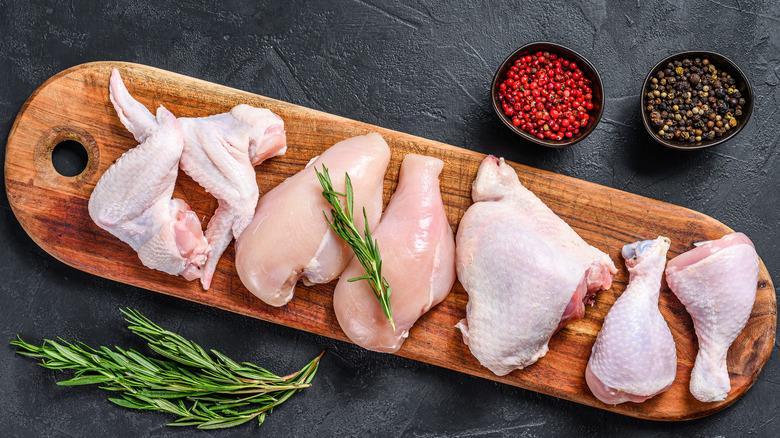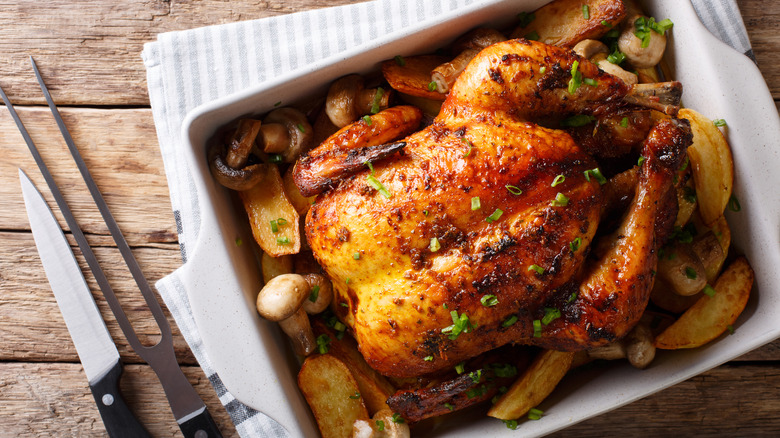The Ideal Cooking Method For Super Juicy Chicken
One of the most agreed-upon proteins, Bloomberg notes that chicken has always been a consumer favorite, but its appeal is steadily increasing following the inflation related to pork and beef. So with poultry sure to be gracing our plates more frequently, it's about time we settled the great debate on which cooking method results in the juiciest chicken.
Poultry is a lean protein. However, given its lower fat content, Your Meat Guide explains that it's more susceptible to moisture loss — aka less juiciness. To keep chicken succulent while amplifying flavor, Food & Wine recommends choosing bone-in and skin-on pieces of meat. Then again, a bit of brining couldn't hurt either.
Despite the fact that chicken needs to be thoroughly cooked in order to avoid salmonella poisoning, this often leads to overcooking. To prevent a dry piece of chicken from ever meeting your mouth again, you'll have to entirely rethink how to cook the bird.
Cook it low, cook it slow
It might seem a bit counter-intuitive for chicken meat to cook for an extended period of time, but according to The Splendid Table, it's actually the secret to a super tender bird. This method could be a game changer for legs, wings, thighs, and whole chickens.
A low and slow method, like roasting at 200°F over the course of several hours, prevents juices from violently spurting out of the meat and then toughening. Likewise, because the temperature is so low, there's less of a risk of overcooking, which is another huge selling feature of this technique.
That said, not all cuts of chicken can benefit from this time-consuming method. For example, Firesmiths explains that a fast and hot process can often be better for boneless and skinless chicken breasts as extended cook time can actually contribute to dryness. But, even then, rescuing stringy chicken is still feasible — just shred and sauce.

